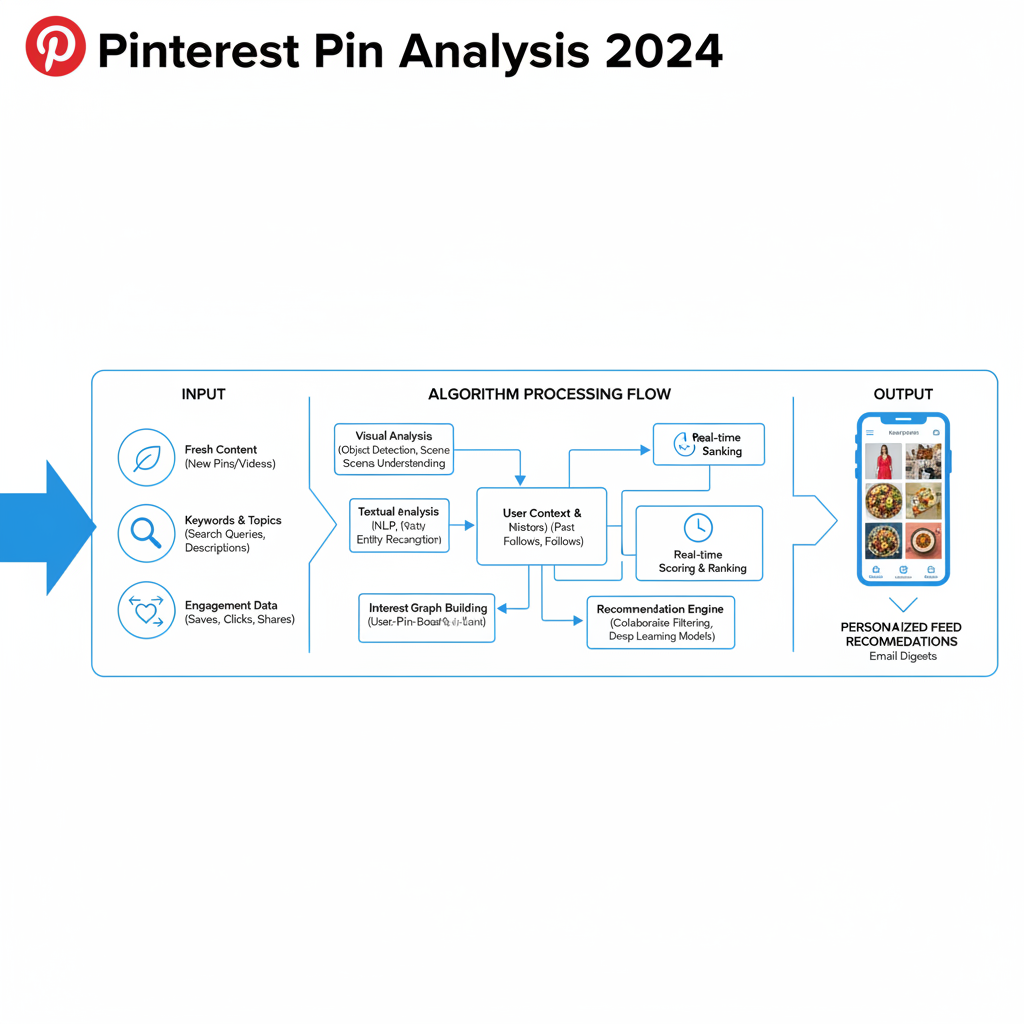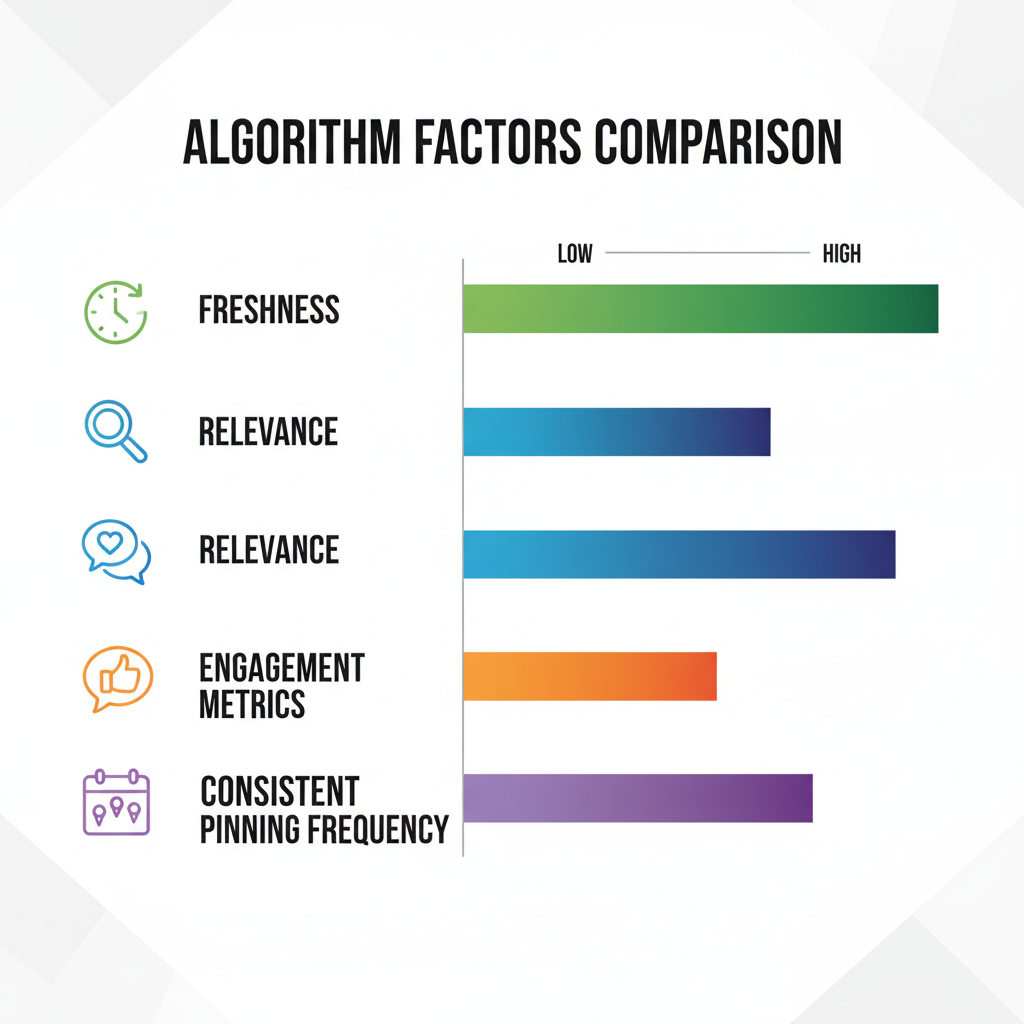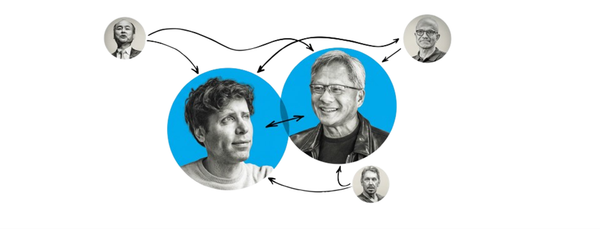How Does the Pinterest Algorithm Work in 2024
Learn how the Pinterest algorithm works in 2024, including ranking factors like freshness, keywords, engagement signals, and consistent pinning.

Introduction to How the Pinterest Algorithm Works in 2024
For content creators and brands, understanding how the Pinterest algorithm works in 2024 is vital to maximizing reach and engagement. Pinterest operates as a visual discovery engine, blending user interaction with search-based recommendations. Its ranking system favors fresh, relevant, and engaging visuals, enabling you to connect your ideas directly with the audience looking for them. By learning the key signals and best practices, you can adapt your strategy to achieve consistent, scalable success.
---
Understanding Pinterest as a Visual Discovery Engine
Pinterest is not just another social platform—it’s a visual discovery engine that connects inspirational ideas with users’ interests. Instead of focusing purely on social interactions, Pinterest’s primary mission is to help people discover, save, and act on ideas they find visually appealing.
What sets Pinterest apart is its blend of social content sharing and search-driven discovery, making its algorithm a mix between a social network feed and a search engine ranking system. Pins are surfaced based on a combination of content relevance, quality, and user behavior signals.

In 2024, the Pinterest algorithm has evolved to deliver more personalized, timely, and high-quality content to each user’s home feed, search results, and related pin recommendations. Understanding how the Pinterest algorithm works will give you the leverage to optimize your content strategy and drive more engagement.
---
Key Factors the Pinterest Algorithm Considers
The Pinterest algorithm ranks and recommends pins using multiple signals. Some of the main ones in 2024 include:
Freshness
Pinterest rewards newly published pins or fresh variations of existing pins. Fresh content gets a temporary boost, giving it a better chance to be discovered.
Relevance
Pinterest tries to match what a user is searching or interested in with the best possible pins. Relevance is influenced by keywords, topic categorization, and pin context.
Engagement Metrics
High engagement rates are a strong signal of quality. Saves, comments, close-ups, and click-through rates all matter in showing the algorithm that your pin is valuable.
---
The Role of Keywords in Pins, Boards, and Descriptions
Pinterest works like a visual search engine, so keywords are critical. When you use relevant keywords in:
- Pin titles
- Pin descriptions
- Alt text for images
- Board titles and board descriptions
…you increase the likelihood that your pins show up in relevant searches.
Keyword optimization tips:
- Use Pinterest’s search bar autocomplete to discover trending keywords.
- Naturally incorporate them into your pin descriptions without stuffing.
- Create thematic boards targeting specific keyword clusters.

---
The Importance of Consistent Pinning Frequency
Pinterest’s algorithm prioritizes active creators. Posting sporadically can hurt your reach, while a steady and consistent pinning schedule signals reliability and relevance.
Best practices:
- Pin at least once per day rather than batching all posts into one day.
- Mix your own original pins with curated pins from relevant sources.
- Use scheduling tools to maintain regular posting even during off days.
---
Interaction Signals That Matter
Pinterest closely monitors how people interact with your pins. Strong signals include:
- Saves – Indicate that people want to come back to your content later.
- Clicks – Show that your content inspired a deeper action.
- Close-ups – Suggest people are intrigued enough to view it in detail.
- Comments – While less common on Pinterest than other platforms, comments highlight engagement interest.
Higher engagement rates in the first hours or days after publishing can help pins gain momentum.
---
Impact of Image Quality and Vertical Format Preference
Pinterest is a highly visual space, so image quality directly affects discoverability. Blurry, badly lit, or low-resolution images are ignored both by users and the algorithm.
Preferred format:
- Vertical images with a 2:3 ratio (e.g., 1000x1500 pixels).
- High-resolution and vibrant, clear designs.
- Avoid excessive text overlays unless necessary for context.
---
Personalization Based on Past Behavior and Interests
Pinterest tailors the feed to each individual user. It studies past activity, such as:
- Boards they follow
- Pins they save or click
- Topics they frequently explore
This behavioral personalization means two users searching for the same keyword might see different results based on their history and preferences.
---
Seasonal and Trending Content Prioritization
The algorithm loves timely, seasonal, and trending content. For example, Halloween crafts will get more distribution in the months before October.
How to align with trends:
- Plan seasonal content 45–60 days ahead.
- Use Pinterest Trends tool to identify emerging topics.
- Refresh older but relevant pins with updated designs and descriptions.
---
Best Practices for Optimizing Pins to Algorithm Preferences
To make the most of how the Pinterest algorithm works, follow these optimization practices:
- Use high-quality vertical images.
- Craft keyword-rich titles and descriptions.
- Maintain consistent, daily pinning habits.
- Diversify content types: single-image pins, carousel pins, and video pins.
- Use rich pins for additional metadata.
- Engage with your audience—reply to comments and reshare relevant pins.
---
Common Mistakes That Hurt Pinterest Performance
Avoid these pitfalls that actively work against Pinterest’s recommendation system:
- Creating spammy boards filled with unrelated pins.
- Using low-quality or duplicated images.
- Keyword stuffing in descriptions or board titles.
- Posting in bulk irregularly instead of consistent pinning.
- Ignoring seasonal opportunities.
---
Tracking Analytics to Understand Algorithm Response
Pinterest Analytics (and third-party tools) provide insights into how your pins perform. Tracking KPIs helps you adjust your strategy:
| Metric | What It Indicates |
|---|---|
| Impressions | How often your pins are shown |
| Close-ups | User curiosity about details |
| Saves | Content desirability for future reference |
| Outbound Clicks | Traffic generation effectiveness |
| Engagement Rate | Overall interaction relative to impressions |
Regularly reviewing these metrics will reveal which styles, topics, and formats perform best with your audience.

---
Adapting to Algorithm Changes in 2024 and Beyond
Pinterest frequently refines its ranking signals. To stay ahead:
- Keep up with updates via Pinterest’s Creator resources.
- Continuously test different pin formats (e.g., idea pins, short videos).
- Watch for shifts in trending topics and seasonal cues.
- Double down on high-performing boards and archive underperformers.
By blending quality visuals, keyword optimization, and consistent engagement habits, your profile can thrive no matter how the algorithm shifts.
---
Summary and Next Steps
In 2024, knowing how the Pinterest algorithm works can transform your Pinterest presence. Focus on creating fresh, keyword-rich, high-quality pins, maintain consistent posting, and engage authentically with your audience. Track analytics to refine your strategy, and align your content with seasonal and trending searches.
Ready to unlock Pinterest growth? Apply these practices today to boost your visibility, drive more traffic, and turn your boards into a vibrant hub for discovery.




